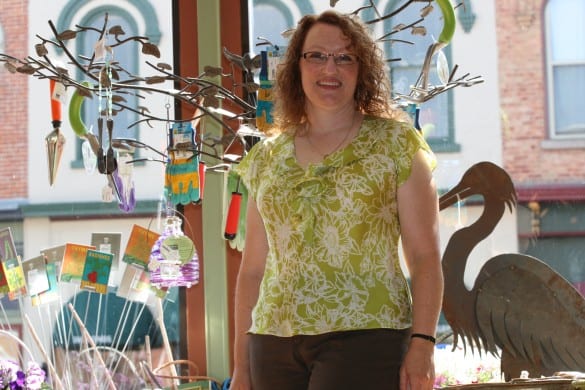
(Chelsea Update would like to thank Jennifer Fairfield of The Garden Mill for this column.)
Yesterday, we looked at companion planting, today, we look at when to plant and what else you can be doing.
I recently had someone ask a very legitimate question when we were talking about the timing of plantings: “Don’t I just go by what it says on the seed packet?” The answer is yes. Sort of.
The seed packet gives you an idea of when it should be OK to plant, but as we all know in Michigan, you can’t always go by the calendar.
Last year, it was 80 in March in Southeast Michigan, and this year we were lucky to make it into the 60s a few days in April.
So how do you know?
The first thing to understand is whether the crop you are planning to plant is cold-hardy – can it stand a bit of cool or even cold weather? Plants that originated south of the border of the US generally can’t, so you don’t want to risk putting them outside until you are sure that there is no danger of frost.
Around here, that is usually sometime around mid-May, though I always wait until Memorial Day Weekend to put out my tomatoes, peppers, eggplants, cucumbers, and summer squashes – why take the chance?! For cold-hardier plants like cabbage and broccoli, go ahead and put them out now (if your soil can be worked in).
For crops that you are direct-sowing as seed in your garden outside, the best way to know if it’s time to plant is by checking the soil temperature. All seeds have a preferred temperature for germination. If you plant them too soon, they may take longer to germinate, or they may not germinate at all, and you just end up wasting your seeds.
Test your soil’s temperature using a soil thermometer, and compare that to a germination chart to see if the time is right. You can find a good chart here, and you can find a good soil thermometer at The Garden Mill.
The other thing you can be doing while waiting to get going in the garden is putting out your hummingbird and oriole feeders. May 1 is the traditional day for this – don’t ask me why, but I have heard many people say that’s when they put theirs out, and it’s always been my practice. I jumped the gun last week because I thought I heard an oriole, so I put out an orange half on my feeder made especially for this purpose.
So far, the only bird that has been eating the orange is a beautiful, male red-bellied woodpecker. Not that I mind – he is gorgeous to watch. But I guess I was wrong about hearing the oriole. So I’ll put the nectar feeders out May 1. If it’s like other years, I should expect to see both hummers and orioles within 24 hours.
If you are feeding hummingbirds and orioles nectar, remember to clean out the feeders on a regular basis – at least weekly. Bacteria grows easily in the nectar, which can be harmful to the birds. If it’s really hot out (eventually, it will be), cleaning out the feeders more frequently is a must. Heat encourages the bacterial growth.
Now is also the ideal time to put up a Purple Martin house. As they start to come back to the area, the younger adults may be looking for new homes.
The Purple Martin conservation Association has all kinds of great information about how to attract these voracious mosquito eaters at their website.
So until next time, happy gardening.

















